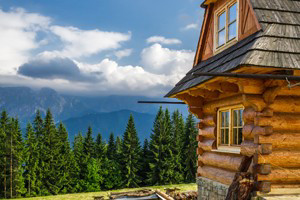- Thompson Chain of Lakes is noted for some great fishing
- You’ll find plenty of camping in this lovely area surrounded by forests of firs and pines
- You have 18 lakes to choose from that provide incredible catches
- Get out on the water using one of the many boat ramps available
Overview
The Thompson Lakes are surrounded by forests of Douglas firs and ponderosa pines, with some of the best fishing in the state. There’s plenty of recreation in the area for the whole family. Stretching 15 miles along US Highway 2 west of Kalispell, Montana, this chain of 18 lakes provides fishable waters, camping and other outdoor fun.
Location/Directions
Head west 35 miles from Kalispell, Montana along US Highway 2 for the first of the lakes, which continue in a “chain” for another 15 miles.
For more information contact the Montana Department of Fish Wildlife and Parks at 490 North Meridian Road, Kalispell, MT 59901 or call 406-752-5501.
Seasons
Winter snow often makes the area difficult to access, so spring, summer and fall are the best times to come.
Activities
There are many activities at these lake sites along this 15- to 20-mile stretch.
- Fishing
Fishing is what most vacationers come here for. All 18 lakes provide incredible catches of many species. In the winter, ice fishing is a popular activity too. Some of the fish you can hook are rainbow, brook and cutthroat trout, largemouth bass, yellow perch, Kokanee salmon, black crappie and northern pike. The variety is amazing! - Boating
Many lakes have boat ramps, like McGregor, Lower Thompson, Horseshoe and Loon Lakes. Getting out there in the sun and enjoying the solitude is the best. - Camping
There are numerous campsites around the Thompson Lakes, and you’ll find exactly what you need. Although the camping limit is 14 days, it will never seem long enough. - Wildlife Watching
The fall is the best time to come to Thompson Chain of Lakes to see the wildlife. You’ll get the chance to see elk, whitetail deer, mule deer and a multitude of birds.
Additional Info
Seven of the lakes are larger than 35 acres and over 160 feet deep, and thirteen of them are completely surrounded by public land.
These lakes are named for David Thompson, a Canadian trader and explorer. He worked for the Hudson Bay Company and Northwest Company and followed the Fisher River until he passed through this area in 1811. He described the lakes in his journal entries.



